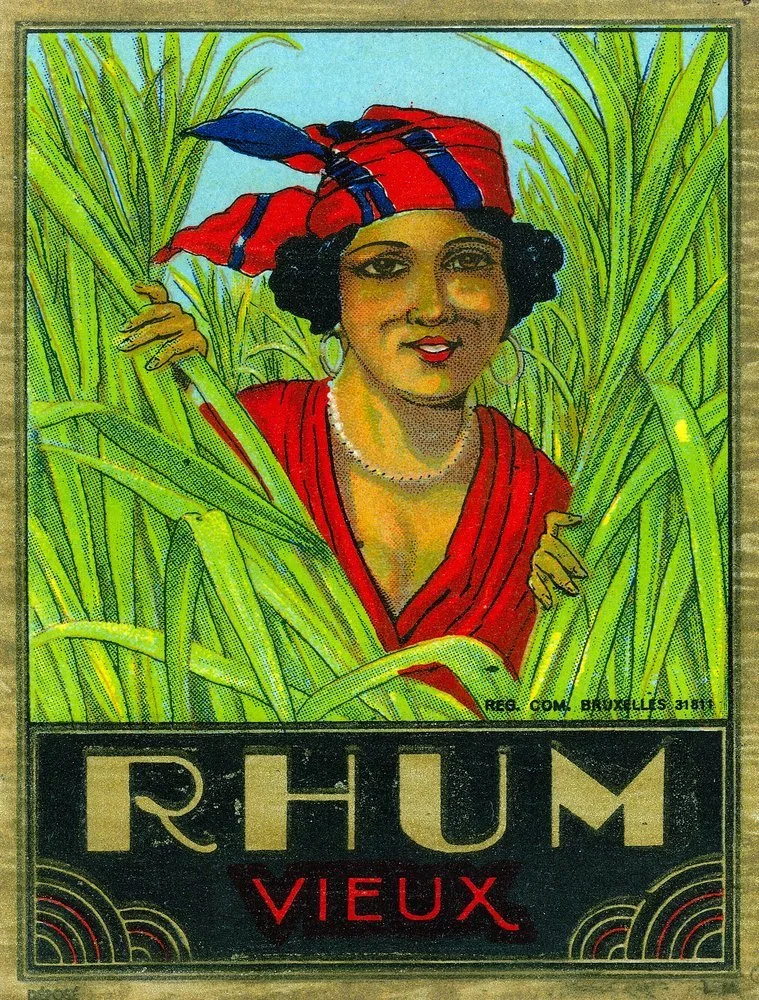Rum
Sugarcane has the highest sugar content of any plant and is cultivated primarily for making sugar. But once it is cut it begins to ferment, producing a mildly alcoholic beverage well known to people who live near and work in cane fields.
First distilled on sugarcane plantations in the Caribbean in the 17th century, rum has had a long history in popular culture as the preferred drink of pirates, sailors and daiquiri-swilling tourists on tropical vacations.
While early descriptions of the molasses-based spirit refer to it as a "hot, hellish, and terrible liquor," today rum is best known as the base alcohol in tiki bar staples such as the mai tai, blue Hawaii, and piña colada.
Light rums, or silver and white rums, have little flavor and are mostly used for mixed drinks; some are filtered after aging to remove color. Most light rums are made in Puerto Rico, but cachaça comes from Brazil.
Gold or amber rums are medium-bodied and usually aged, getting their color from wooden barrels (often the leftover charred white oak barrels used in making Bourbon). They are stronger-tasting than light rum, a between light rum and the darker varieties.
Dark rums - including brown, black, or red rums - are a grade darker than gold rums, aged longer in heavily charred barrels. They have stronger flavors than either light or gold rums, often with a hint of spices and a strong molasses or caramel overtone. Dark rum is the type most commonly used in cooking. Most dark rums come from Jamaica, Haiti, and Martinique.
Spiced rums obtain their flavors from added spices like cinnamon bark, bay leaves, allspice, cloves, mace, rosemary, absinthe/aniseed, pepper, and caramel. Most are darker in color, and based on gold rums. Some are significantly darker, while many cheaper brands are made from inexpensive white rums and darkened with caramel color.
Flavored rums are infused with flavors of fruits, such as banana, mango, orange, citrus, coconut, starfruit or lime. They are mostly used to flavor tropical drinks, but can also be consumed straight or on ice.
Overproof rums are much higher than the standard 40% ABV, with many as high as 75% to 80% available. One example is Bacardi 151.
Premium rums are made from high-quality sugarcane crops and patiently distilled and aged in oak barrels, creating bold, complex libations best experienced straight or on the rocks.
Rhum Agricoles are a type of earthy rum made from fresh-squeezed cane juice rather than molasses.
Still Distinctions
The type of still used in making rum can have an effect on the consitency and flavor. Pot stills produce one batch at a time, whereas column stills allow for a more continuous distillation process. Column still rums are typically lighter; pot stills are heavier.
Brands
10 Cane
Angostura Rums
Appleton Estate
Arehucas
Bacardi
Ballast Point
Barceló
Beenleigh
Belmont Estate Rum
Berkshire Mountain
Bermúdez
Black Cat Superior Rum
Bleeding Heart
Blue Water
Bodega 1800
Brugal
Bully Boy
Bundaberg
Cacique
Captain Bligh
Captain Morgan
Carúpano
Cavalier
Celebration
Cruzan
Dogfish Head
Don Q
El Dorado
English Harbour
Fernandes Rums
Havana Club
Inner Circle Rum
Isla Ñ Rum
John Watling's
Kenya Cane
Khukri Rum
Kraken
Marienburg Rum
Matusalem
Maui Dark Rum
McDowell's No 1
Millonario
Mount Gay
Muddy River
Mulata
Myers's
New Holland
Newfoundland Screech
Ocean
Old Master Rums
Old Monk
One Barrel Rum
Oronoco Rum
Papagayo
Privateer Rum
Pusser's Ltd.
Railean Rum
Rhum Barbancourt
Rogue Spirits
Ron Botran
Ron Cartavio
Ron del Barrilito
Ron Pomalca
Ron Zacapa
Rum Ryoma
Rum-bar
Sailor Jerry
Sang Som
Santiago
Seven Fathoms
Siboney
St. George Spirits
Stolen
Stroh
Tanduay
Turkey Shore
Varadero
Venado
Zaya Rum



